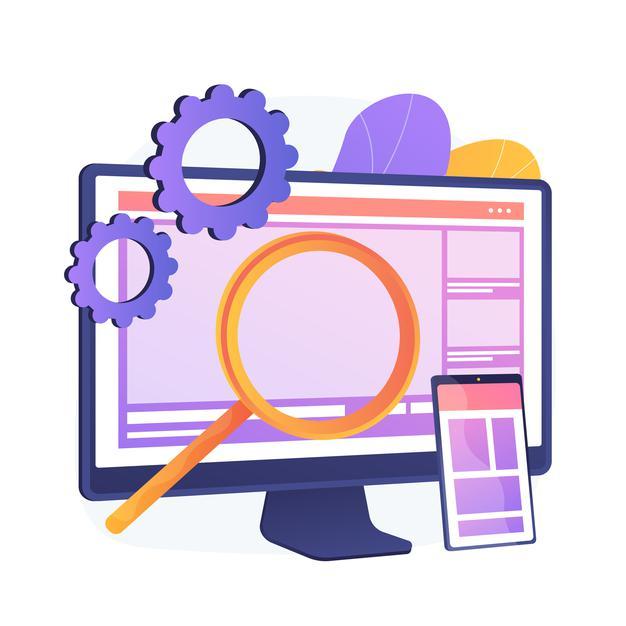Adjustability and adoption are the keywords when it comes to most things in life. Talking of the digital sphere these things matter when you look at establishing a digital presence. The basic and foremost thing to have a digital presence is a website and you need to ensure you make the first move right. That’s where adjustability and adaptability play a crucial role. Don’t be in much confusion as we are not talking about any complex technicality or logic but the design of the website. Yes, the website that you carry as your face of the business digitally has to be smooth and up to the need.
A responsive web design is what we are exactly talking about. If you think it’s about hiring the services of a responsive web design agency and getting the job done, then hang on. If you are a business owner and are looking to get a responsive design for your website then you should first understand the very concept of it. Further, you should understand the need for such a web design for your business as then only you can be sure of what you need and what goes well with your business. Only when you are clear with these things then hiring a web design agency comes into play.
To make things simpler for you and to make sure that the click that you have made to the web page yields some output here is all for you. Just keep on reading as we are going to discuss all these in a simple, crisp, and easy to go manner.
What Is Responsive Website
A responsive website or what you say the responsive web design is the one that allows easy screen-based adjustment for the website. That is the website is optimized based on the device that the user is accessing it from. Confused? Let’s put it simply. A responsive web design makes sure that the website/web pages when viewed on different screens say mobile, tablet, desktop, laptop, etc. delivers the best and optimized view. This also means that irrespective of the device at the user end performance and efficacy of the website remain the same.
To make it crystal clear take the example where 3 users say user A, B, C are accessing a given website on mobile, computer, and tablet. If the user of the computer is getting a full view of the website and the tablet and the mobile user is getting an incomplete view, say something like the web page is extending out of screen then the design of the website is non-responsive. If the design would have been responsive all the tree users would have got the optimized view of the website. The auto screen adjustment of the website or the responsiveness is to be done at the time of its design and development. During the phase CSS (Cascading Style Sheets) media queries are used to allow the website to change and adapt seamlessly with the screen size. This is a technical side of the thing that separates it from the adaptive websites with whom they are confused mostly. Adaptive websites are basically the one who uses static layouts and fixed screen widths like 320, 480, 760, etc to fix the screen on which they are being accessed.
The Need For Your Business
Having gone through the explanation and the meaning of being responsive it’s time to look at the business side of it. Yes, the core of our discussion here, why you need a responsive web design for your business. The one reason that is obvious is that to deliver the best of the user experience and to reach the maximum audience as you are covering all the devices. Apart from that, there are other reasons that we are going to look at here.
- The Traffic: Most of the websites that are designed have by default the adjustment with the desktop website. This was good a decade or half ago when mobile phones didn’t have that much penetration and mobile internet was not that cheap and accessible. The latest reports by renowned names like Statista clearly show that mobile users worldwide are driving around half of the traffic on the internet. This also explains why the tech giant Google has adopted mobile-first website indexing for all websites. As a business, you can’t ignore mobile in fact most businesses design their digital strategy keeping mobile as the main element. Thus, traffic division means to be responsive and adaptive.
- SEO: Search Engine Optimization (SEO) is something that lies at the end of all the digital plans and strategies that businesses build. Obviously, you want your websites to rank higher on search results. To do that you need to follow the best SEO practices which have responsive website design listed as a major thing. In fact, as we read above about the mobile-first indexing of Google, the rule setter of the web world gives preference to mobile websites. The message is clear that to market your business online mobile shall be the device to look for and to do that become responsive with your presence.
- Loading Time: The time when a user clicks the link of your website and the time in which the homepage or the landing page loads is a critical factor. This is a time either user can get the best of your website or can go away to never return. There are hardly 3-4 seconds to make or break things here. Don’t expect a user to wait for even 20 – 30 seconds for your website. With a non-responsive website design, the time to wait may be more than this as the website tries to fit the screen size as it loads. Thus, a non-responsive website is more like the opposite of the targets that you are trying to achieve through your digital presence.
- Conversions: By the very fact that a responsive web design is user-friendly it delivers results at the conversion front as well. When the user is easy going on your web pages and is able to navigate with ease it’s more likely that there would be a response on the call to action (CTA) button. Moreover, in a responsive website the placement of CTAs that you do to attract the user’s attention and response gets adjusted with screen size, this means that your target doesn’t get affected when you choose a responsive design in fact it gets boosted with a wide reach.
- Cost-Cutting: Looking in from a business perspective cost-cutting and saving is an important thing. With a responsive website that is possible. You don’t have to invest in creating two versions of the website: the desktop and other device versions. Further, not only the initial cost but the maintenance of multiple websites is a constant expenditure on the business front. All this can be avoided if you make a move to the responsive design route at the very beginning.
- Low Bounce Rate: Bounce rate is a thing that all websites try to reduce. It is basically the percentage of users who enter the website and go without further visiting other pages of the website. Responsive website design helps in reducing that percentage. Google brings down a website with a high bounce rate as they get categorized as being not able to solve the users’ needs. The last thing that any business would want to get their website listed in that category. While mostly content is seen as a reason for it in reality the design also plays a big role. As we discussed above, loading time affects traffic similarly to the bounce rate. If a user comes on the website and clicks on a button taking to other pages on the website then due to the high loading time he might get irritated and leave the website there adding to the bounce rate. With a responsive website, the load time is less so a reduction in bounce rate is possible very much.
Conclusion
As we come to the conclusion of our discussions we have covered all the aspects related to the thing which we were talking about at the start. The responsiveness as a concept is a need of the hour as is evident from the advantages we discussed. Moreover considering the dynamic nature of the digital world it’s required for the websites to be adjustable to changing scenarios. Another major thing that we saw is that mobile is the device when it comes to digital marketing, online presence, or reputation creation and capturing of the base.
Now, as you have got the insights about the need for having a responsive website it’s time you should act. Look for the needs of the business and then plan for the development of a responsive website. When you know what you need from your website it becomes easier to incorporate responsiveness in the design and development phase. This is because when you are clear of what you want you can clearly spell that out to the service provider which in turn delivers you the output accordingly.
Author – BIO :
Robert Williams is an Digital Marketing Manager at SEO Company Experts. He is passionate about his job and always love to share content on SEO Content Marketing, PPC Services, Digital Marketing, Branding & Online Marketing for All kind of Industry.




















![TamilMV Proxy List Top 30+ [Unblock TamilMV Sites] TamilMV Proxy Unblock](https://technewsgather.com/wp-content/uploads/2023/04/17825836_SL-121019-25870-14-1-100x70.jpg)